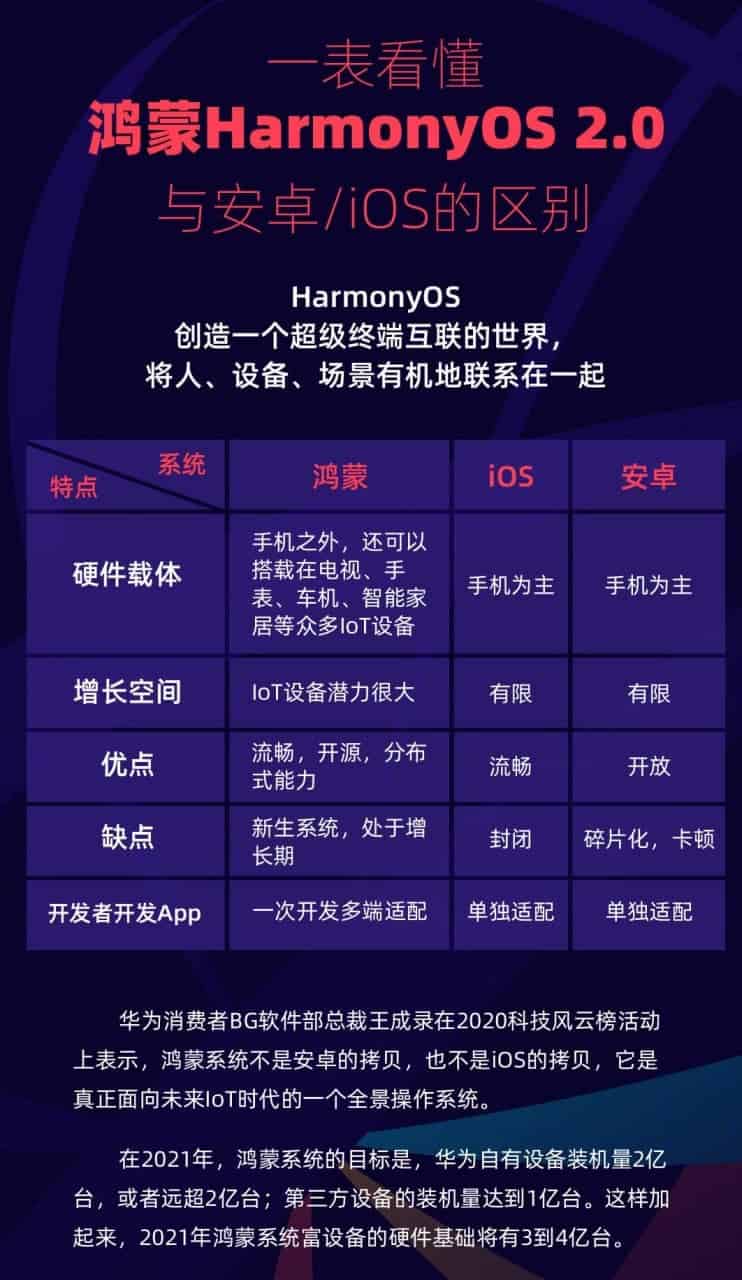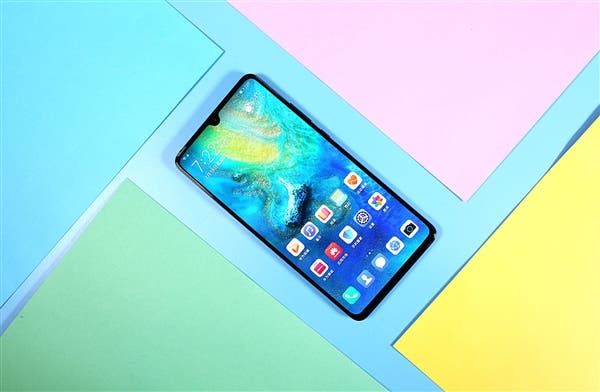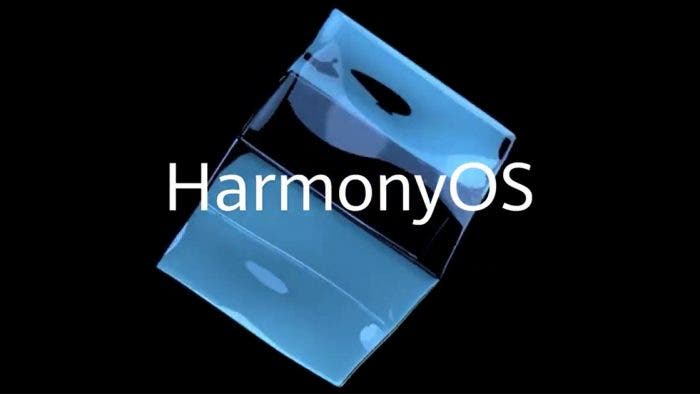Wang Chenglu, President of Huawei’s Consumer Software Division, decided to finally clarify the main differences between HarmonyOS, iOS and Android.
HarmonyOS (HongmengOS in China) for smartphones is considered by many as an alternative to Android. Earlier, there were information on the web that the first release of HarmonyOS 2.0 for smartphones will be based on Android.
Wang Chenglu said yesterday that HarmonyOS is not a copy of iOS and Android. So, now he has provided a table (for those who know Chinese) showing the main differences between the operating systems.

HARMONYOS VS IOS VS ANDROID
-
HARMONYOS:
Hardware platform: In addition to the mobile phone, it can also be mounted on many IoT devices like TV, cars, smart home appliances
Growth Area: IoT devices have great potential
Advantages: Open source, fluency, and distributed capabilities
Disadvantages: Newborn system in growing age
Apps Developments: One-time development, multi-end adaption capability
-
IOS:
Hardware platform: Mobile phone
Growth area: limited
Advantages: Smooth
Disadvantages: Closed
Apps Developments: Individual adaptation
-
ANDROID:
Hardware platform: Mobile phone
Growth area: limited
Advantages: Open source
Disadvantages: Fragmentation, stuttering

Huawei: HarmonyOS is not a copy of Android and iOS
Huawei’s operating system HongmengOS for China and HarmonyOS for the rest of the world is not a copy of either Android or iOS. One of Huawei’s top managers, Wang Chenglu, president of Huawei’s consumer software division, spoke about this in a speech to reporters.
HarmonyOS for smartphones is being considered as an alternative to Android. Earlier, there were information on the network that the first release of HarmonyOS 2.0 for smartphones will be based on Android.
According to Wang Chenglu, the company has been developing the operating system since May 2016. He also noted that HarmonyOS provides very broad “panoramic” opportunities for the future era of the “Internet of Things”. While, for example, iOS is created exclusively for smartphones.

The company has set a goal of 200 million HarmonyOS-based devices in 2021, and hopes for much greater results – 300-400 million.
The Chinese company is already testing HarmonyOS 2.0 on smartphones by selected developers and partners.
Huawei will share its Android replacement OS with other smartphone makers
The director of Huawei Consumer Business Group, Yu ChengDong, better known in the world as Richard Yu, spoke about this.
Huawei could help the Chinese smartphone manufacturers use the HarmonyOS operating system and services that have already performed well as a replacement for GMS.
The top manager made this announcement in case Chinese manufacturers are unable to obtain a license to use the Google Mobile Service (GMS) and Google Play Store on their smartphones.
The company is already testing HarmonyOS 2.0 on smartphones with selected developers and partners.

HARMONY OS 2.0 MOBILE DEVELOPER BETA MAIN FEATURES
- Brand new mobile phone UI controls, adding 50+ UI controls for developers to develop mobile HarmonyOS applications. It also unifies the UI interaction experience of multiple devices.
- The HarmonyOS application framework supports mobile phones and rapid migration. It also supports swift connection and circulation. There is a no-installation loading of HarmonyOS applications on multiple devices.
- Provides Windows and Mac platform development and compilation toolchain experience. This is also convenient for developers to quickly develop HarmonyOS applications.
- Provides 40+ Sample Codes for mobile developers. This is convenient for developers to quickly understand and adapt to HarmonyOS interfaces and development methods.
- Distributed capability interfaces such as multi-modal perception support multiple usage scenarios.
- Also offers a standard input method framework and capabilities
- Provide standardized telephone system interface capabilities.
- Also uses a barrier-free development framework
- Provides standardized distributed data management capabilities. Developers can also call standardized distributed DB interfaces to realize real-time data synchronization between devices.
- Enhance the account system capabilities. It also includes accountless devices into the HarmonyOS system.





